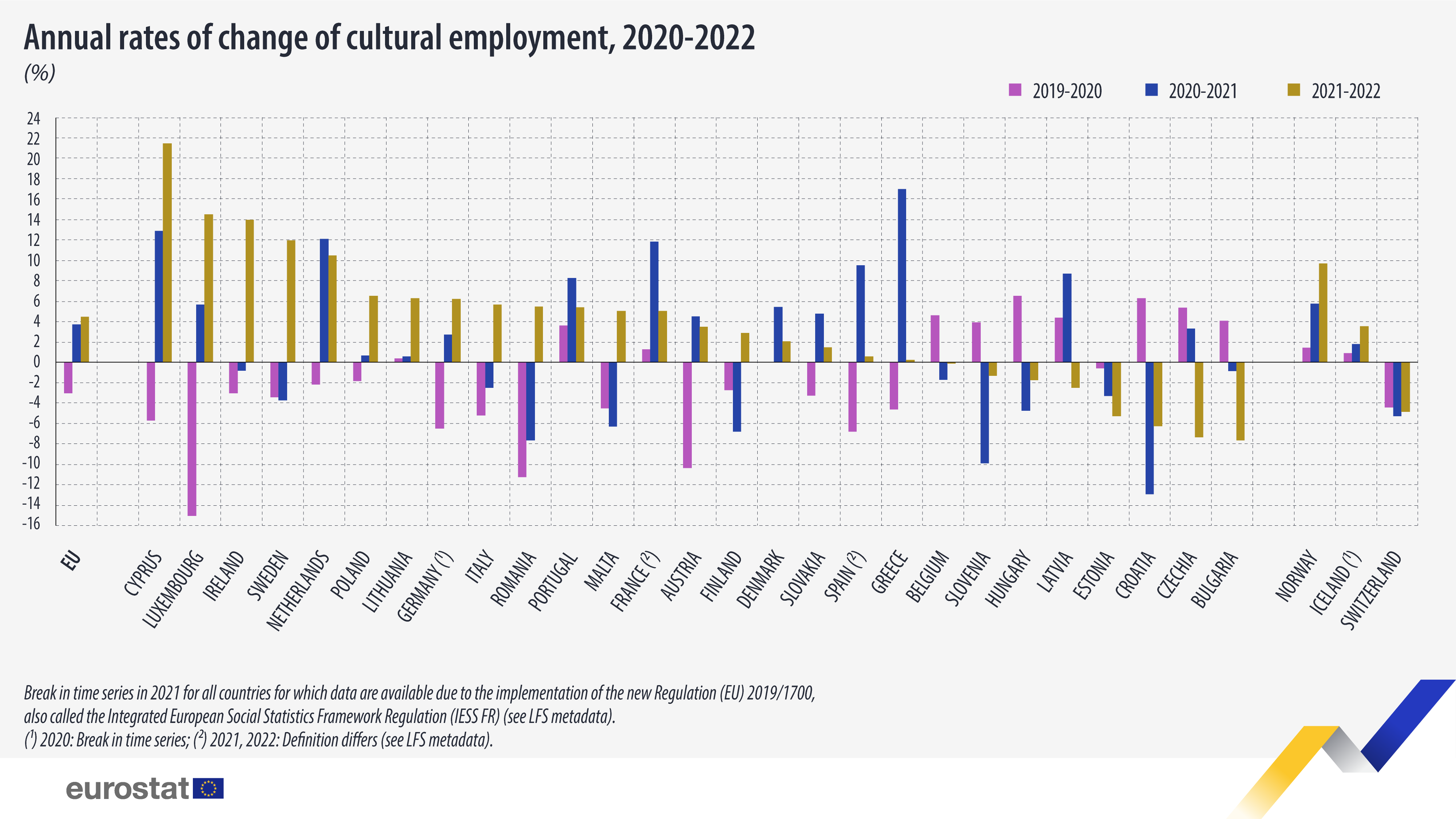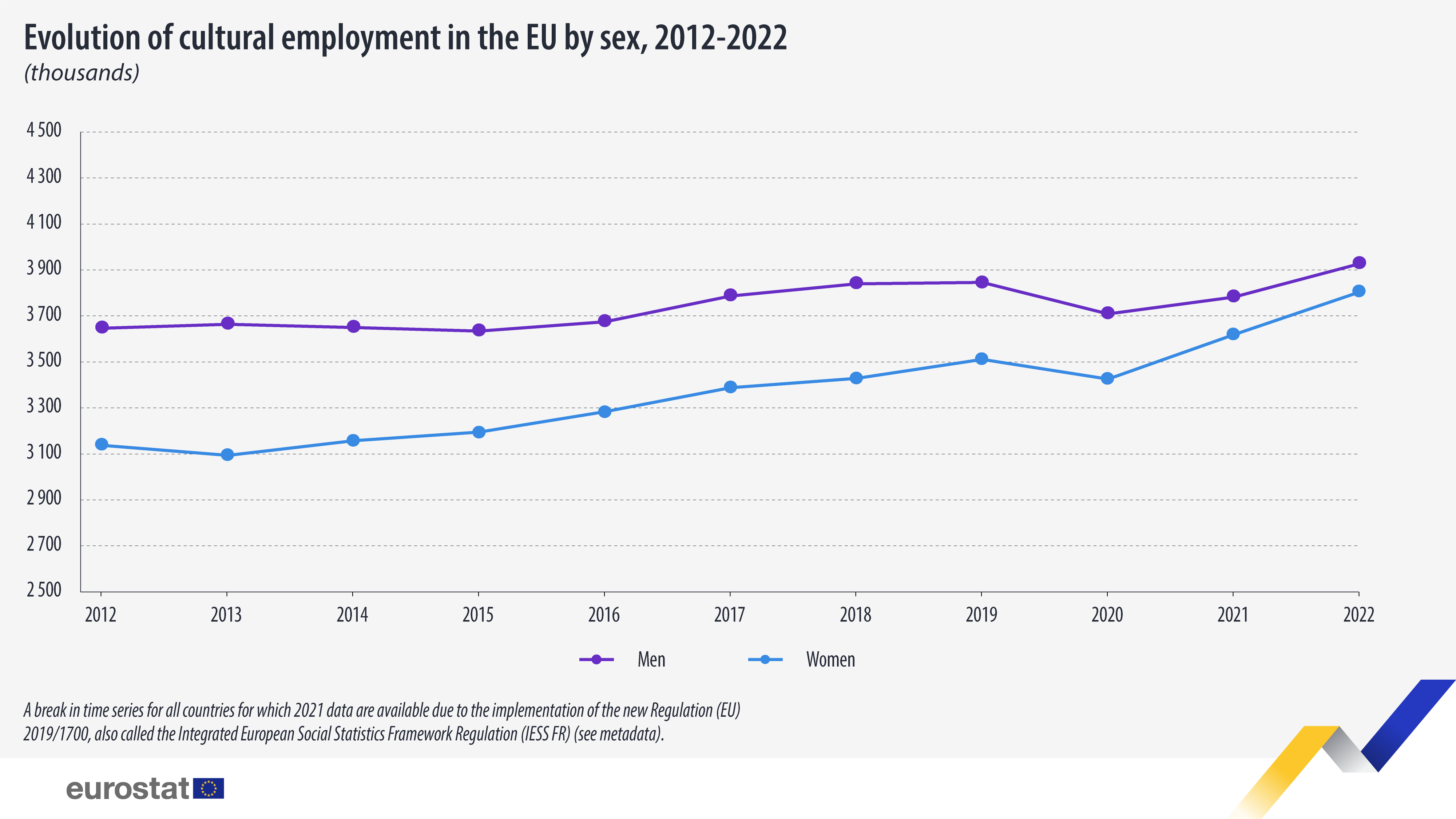In 2022, approximately 18,100 people worked in the cultural sector in Cyprus, representing 4% of total employment, according to a report released by Eurostat on Thursday.
The report shows that the number of people working in the Cypriot cultural sector rose by 21.5% between 2019-2022. This is the largest rise in the European Union, Eurostat notes.
Specifically, in 2021 approximately 14,900 people were employed in the Cypriot cultural sector, while in 2020 and 2019, 13,200 and 14,00 were working in the sector, respectively.
EU
In 2022, the cultural sector in the EU employed 7.7 million people, representing 3.8% of total employment. Compared with 2021, it indicated a 4.5% increase from 7.4 million.
The share of people employed in the cultural sector increased in 19 EU members and fell in the other 8. The most significant increases were recorded in Cyprus (+21.5%), Luxembourg (+14.5%), Ireland (+14.0%), Sweden (+11.9%) and the Netherlands (+10.5%). Meanwhile, the most significant decreases were recorded in Bulgaria (-7.7%), Czechia (-7.3%), Croatia (-6.3%), Estonia (-5.3%) and Latvia (-2.5%).
Source dataset: cult_emp_sex
In the timeframe 2019-2022, Eurostat notes different patterns for the annual rates of change across years. The most significant increases in annual rates of change for cultural employment were observed in Cyprus, which went from -5.7% in 2019-2020 to +21.5% in 2021-2022, Luxembourg (-15.1% to +14.5%) and Ireland (-3.0% to +14.0%). The most substantial decreases were registered in Czechia, which declined from +5.3% in 2019-2020 to -7.3% in 2021-2022, Croatia (+6.3% to -6.3%) and Bulgaria (+4.1% to -7.7%).
France, Lithuania, and Portugal were the only EU countries with an increase in employment in the cultural sector both between 2019-2020 and 2021-2022. On the other hand, Estonia is the only EU country which experienced a decline during both periods.
Gender gap in cultural employment reaches its lowest level in 2022
Since 2013, the number of women in cultural employment has been increasing across the European Union, except in 2020. In 2022, the cultural sector recorded the smallest ever gender employment gap with a difference of just 1.6 percentage points, corresponding to 3.93 million men and 3.80 million women (50.8% and 49.2%) employed in the sector.
Source dataset: cult_emp_sex
The picture varied somewhat between EU members, with women surpassing the share of men working in the cultural sector in 14 countries. High differences in the shares, in favour of women in cultural employment, were recorded in Latvia (26.3 pp difference between women and men), Lithuania (25.7 pp), Cyprus (17.1 pp), Bulgaria (13.6 pp) and Luxembourg (13.3 pp).
On the other hand, the countries with the highest gender employment gap in the cultural sector were Malta (21.6 pp difference between the share of men and women), Spain (9.5 pp), Ireland and Italy (around 8.5 pp).








